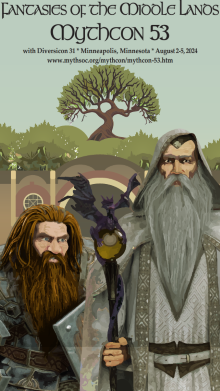Abstract
This paper considers the fiction of J.R.R. Tolkien and the other Inklings (specifically C.S. Lewis and Charles Williams) as being influenced by a set of shared ideas. First, Tolkien and the Inklings believed in a divine creator whose creation displays order. Every individual, they claimed, has been divinely called to be a “sub-creator” to create art so that this universal order might be reflected. And the Inklings’ writings testify to the importance of this order in their lives (as displayed by six Medieval analogies: God as composer, choreographer, author, painter, player and guide). Secondly, Tolkien and the Inklings were familiar with the primarily Medieval notion that the matter of the world is inherently divided into groups of “four.” This division may be seen around humans (in Nature), among humans, within humans, and in human creations (Art). And every division of four may be seen to adhere to one of eight forms. And finally, Tolkien and his colleagues perceived the process of creation, whether by God or humans, to be similar. There is a three-step process of 1) selecting parts with which to work, 2) creating a border within which to work, and 3) combining these separate pieces in a unique, ordered way so as to produce a harmonic whole. The narrative structure of The Lord of the Rings represents the most effective application of these ideas. Tolkien’s masterpiece makes use of a Medieval interlace structure which depends on the interaction of four narrative groups which exist after the breaking of the Fellowship. Weaving these four lines of narration is central to the “rhythm and ordering” of the tale and displays Tolkien’s real skill. And not surprisingly, these four narrative groups can be better understood in the light of other creative divisions: the four elements, the four traditional classes of society, the four divisions of colour, the four parts of choral harmony, the four sections of an orchestra, etc.
Creative Commons License

This work is licensed under a Creative Commons Attribution-NonCommercial-No Derivative Works 4.0 International License.


